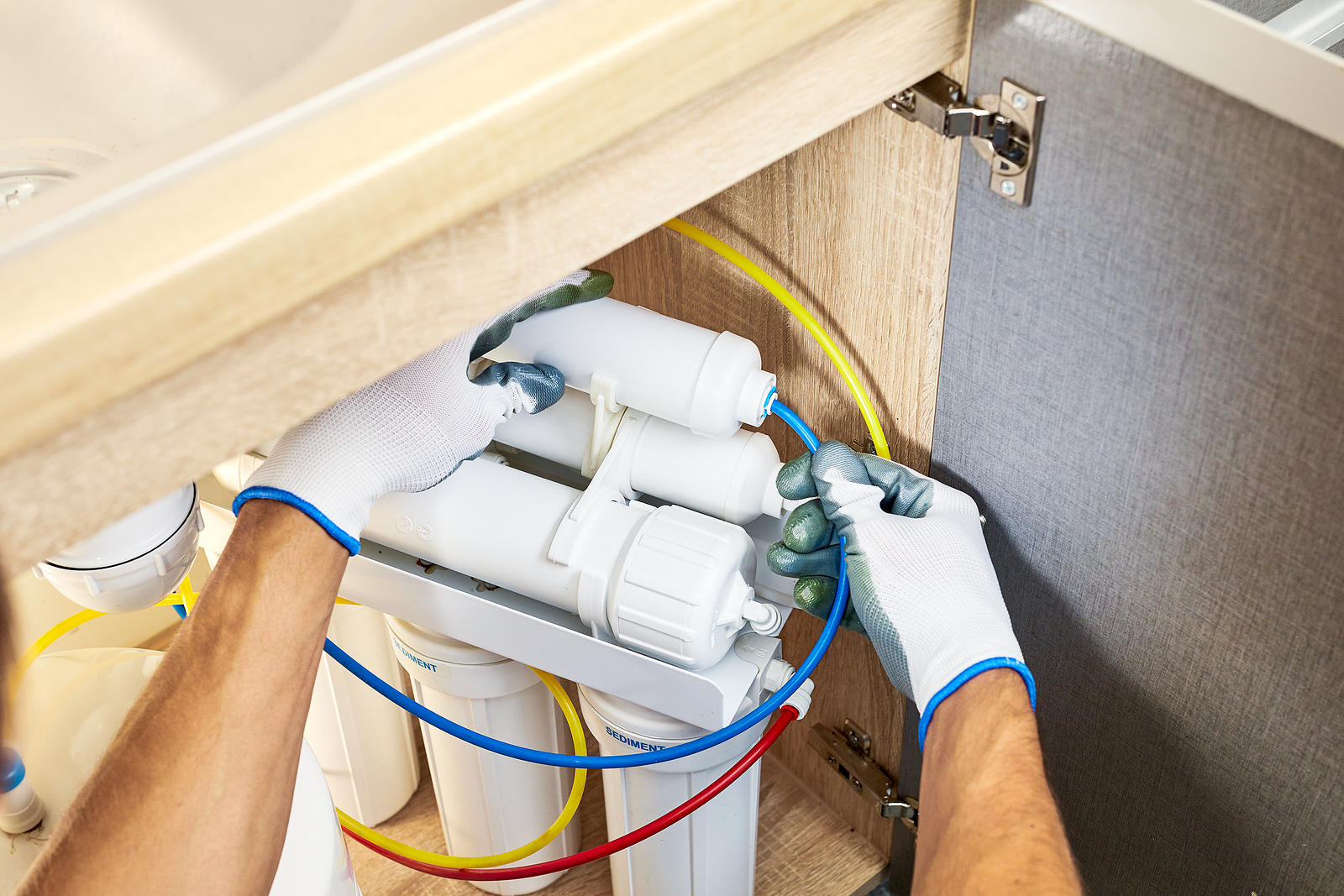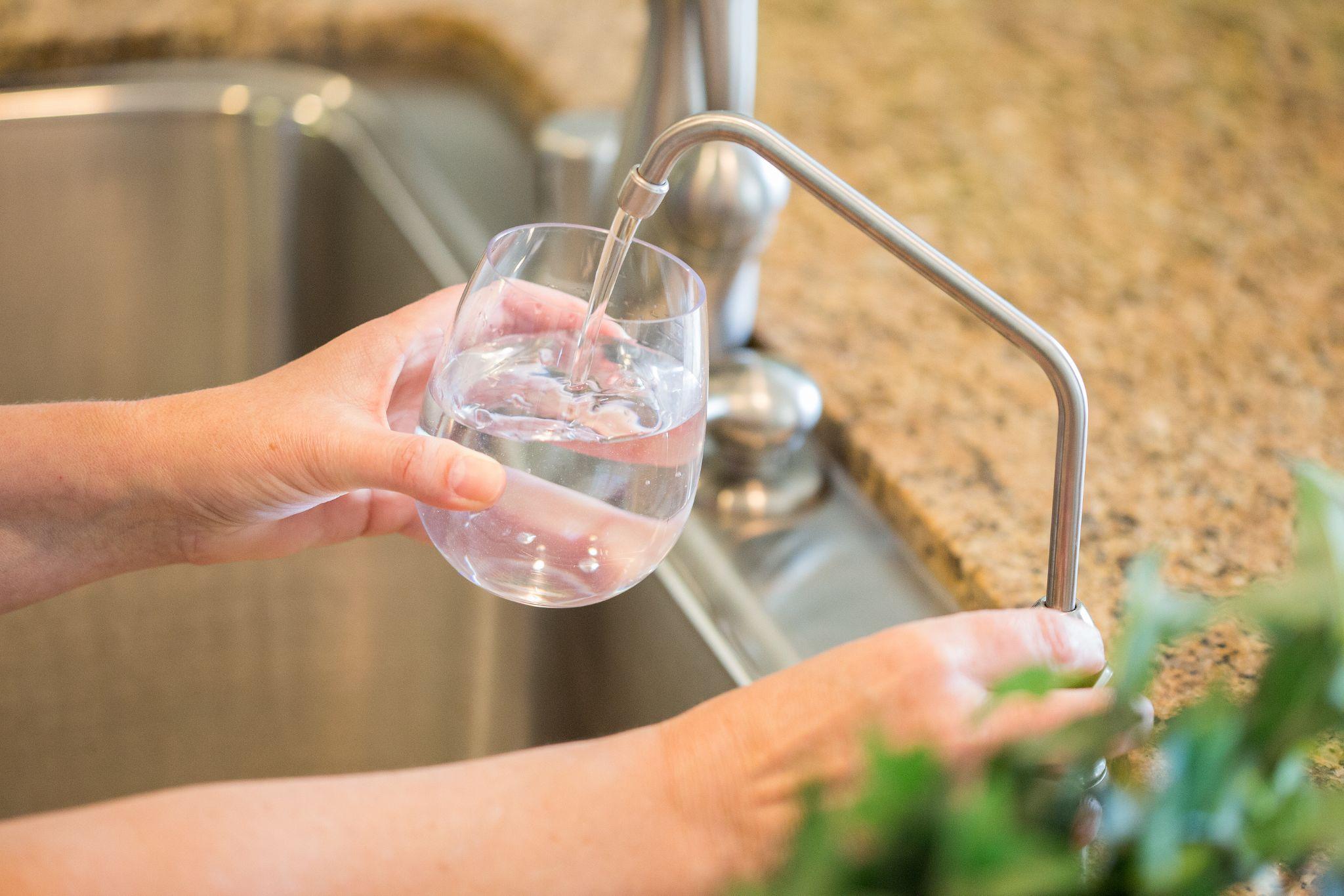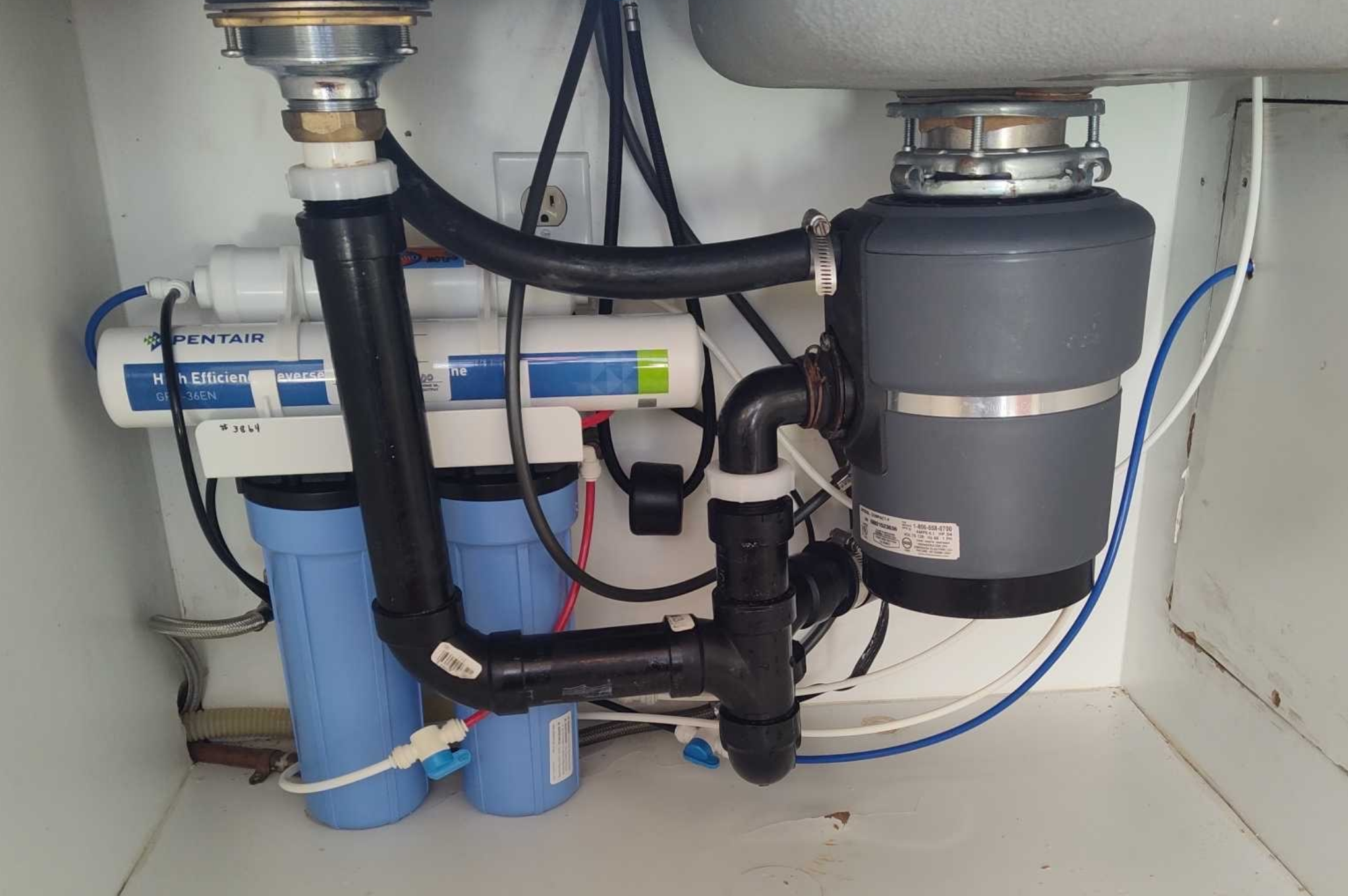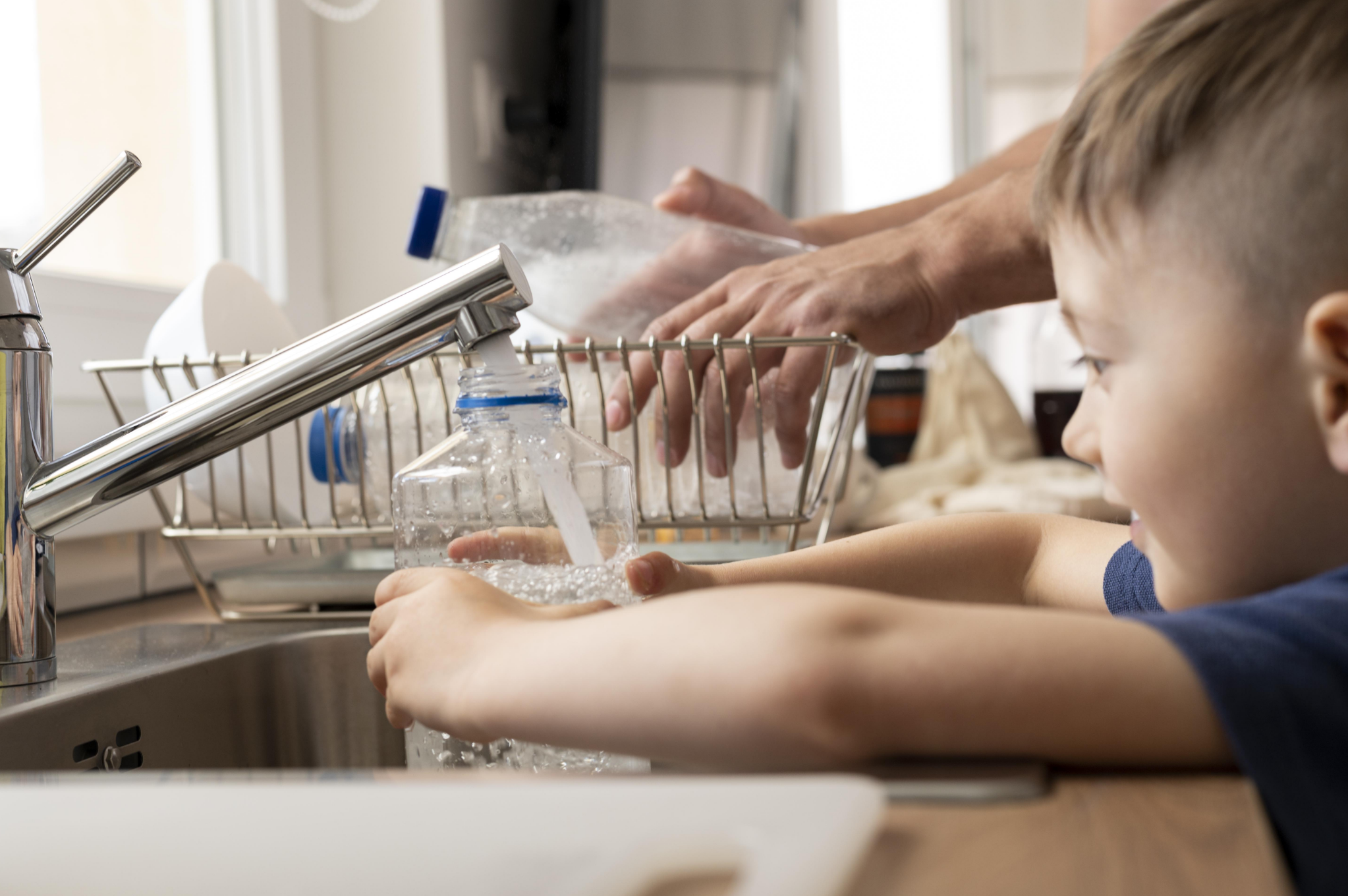Author: Ken Christopher | 20 min read | Sep 20, 2023

Crystal-clear water can still hide contaminants like lead, chlorine, and bacteria. That’s why more households rely on reverse osmosis systems to ensure their drinking water is truly clean. These systems are trusted for their ability to remove a wide range of impurities and deliver fresh, great-tasting water.
However, even the best filters need maintenance. Regular RO filter replacement is key to keeping your water safe and your system performing at its best.
But how long do they really last before maintenance? And when does your RO fridge filter need changing?
This guide will show you what really affects RO filter life, how to spot when it’s time to change, and how to keep your water at its best.
Let’s start with the basics.
Reverse osmosis filters are a key component of RO systems, designed to remove impurities, contaminants, and minerals from your water supply.
These systems are widely used in homes and businesses to ensure the water you consume is safe and healthy. Every drop passes through layers of protection, stripping out what you don’t want and leaving what you do.
However, it’s important to note that RO filters don’t last forever.
Over time, the filters in your RO system will become less effective at removing impurities, potentially compromising the quality of your water. That’s why RO filter replacement is so important. Miss the moment, and your water might lose its clarity.
This leads us to the crucial question: How long do reverse osmosis filters last? Before answering this question, let’s have a look at how an RO filter works.
Every glass of clean water starts its journey somewhere. For many homes and offices, that journey runs through RO filters.
RO filters work by pushing water through a semipermeable membrane, removing up to 99% of dissolved solids and contaminants like chlorine, lead, fluoride, and nitrates. These filters are central to any RO system, forming a line of defense that ensures only clean water makes it to your tap or RO fridge filter.
A full reverse osmosis system includes several filtration stages, not just one filter. Each stage has a purpose. Sediment pre-filters catch larger particles. Carbon filters handle odors and chemicals. The RO membrane completes the purification. The result? Water that’s clear, crisp, and ready for anything.
Every stage flows together smoothly. When you pour a glass, you’re not just getting refreshment. You’re experiencing a well-choreographed process. It works quietly behind the scenes, delivering purity with every drop.
Don’t delay any more time in securing clean water for your home. Explore our range of drinking water systems.
Source: EWG
Here’s a quick breakdown of what’s typically inside an RO system:
Getting to know more about these parts is key when scheduling RO filter replacement, as each has its own expected lifespan and maintenance needs.

Knowing how long each stage of your RO system lasts helps you avoid drops in water quality and unexpected issues. While no filter lasts forever, proper timing and upkeep ensure your system keeps delivering clean, safe water.
No two RO filters follow the exact same timeline. Some last a year, others just a few months. It all depends on the journey your water takes before it reaches your glass. A filter working overtime in a busy household, or guarding against tough contaminants, will wear out sooner.
Meanwhile, a system used less frequently may stretch its lifespan a bit longer.
Several factors influence how long reverse osmosis filters last, including:
By paying attention to these variables, you’ll know exactly when your filters need a swap. This keeps your water clean and your system running at its best, every single day.
In an RO system, multiple types of filters work together to purify water.
The pre-filters have a life expectancy of 6 to 12 months and are important in preventing the sediment and larger particles from reaching sensitive parts like the RO membrane.
The Carbon filters, which last 6 to 12 months, are important in removing chlorine and organic chemicals, which retards the efficiency of the membrane.
The RO membrane itself depends on water quality and maintenance, but can vary from 2 to 5 years. Post-filters or polishing filters can then be expected to maintain great taste, and the last stage of filtration, and should be replaced every 12 months.
If your system includes an RO fridge filter, the lifespan could be the same as post-filters, needing replacement every 6 to 12 months based on usage and brand.
Several external and internal factors affect how long your RO filters last:
Skipping the replacement schedule of your RO filter can lead to unsafe drinking water and irreversible damage to your system.
Every reverse osmosis system has its rhythm. Stick to the schedule, and your water stays clean. Miss a beat, and quality slips sometimes before you even notice.
To ensure your RO system consistently provides clean water, it’s crucial to follow recommended replacement schedules for each filter.
Ignoring these schedules can lead to a decline in water quality. So, when should you change your filters?
But don’t just watch the calendar. Listen to your system, too. Here are key indicators that it might be time for RO filter replacement:
RO filter replacement schedules offer a solid baseline, but these real-world signs are your backup plan. Together, they help keep your system safe, efficient, and always delivering the quality you expect.

To get the most out of your reverse osmosis filters and extend their lifespan, consider these best practices.
Periodically clean the filter housings to prevent sediment buildup, which can reduce filter efficiency. Regularly inspect your system for signs of damage or sediment accumulation that may affect filter performance.
In addition to the housing, consider wiping down surrounding areas and sanitizing the RO storage tank at least once a year. This prevents bacterial growth and keeps the entire system running efficiently.
Every household tells a different story. Maybe yours is busy, with faucets running and filters working hard.
Maybe it’s quieter, but your system still feels the strain when guests arrive or seasons change.
No matter which household you are, keep an eye on your water usage to adjust replacement schedules accordingly. Increased usage may require more frequent filter changes. Notice any changes in water taste, color, or pressure, as these can be indicators that it’s time to replace filters.
As household size or water demands change, your RO filters may be under more stress.
Monitoring gallons used can help you better estimate when an RO filter replacement is due, especially for RO fridge filter setups that see daily use.
The pre-filter is your system’s front-line defender, catching the big stuff before it causes trouble downstream. Because of this heavy lifting, pre-filters often need replacement sooner than the rest.
Don’t wait for problems to appear.
Be proactive about swapping pre-filters and, if possible, give them a periodic clean to extend their lifespan, but never put off replacement when it’s due. A clean pre-filter protects your RO membrane, making sure sediment doesn’t clog or damage your system.
If your water carries a lot of sediment, expect to change these filters more frequently, sometimes every 3 to 6 months.
Following a filter replacement schedule maintains water quality and also prevents system damage and costly repairs. We recommend setting reminders on your calendar or subscribing to auto-replacement services that deliver filters on schedule.
By following these maintenance practices, you can maximize the longevity of your RO filters and maintain water quality.
Want less hassle? Sign up for the Rayne Water VIP Program. It includes regular salt deliveries for your softener, filter changes for your RO, and provides annual preventative maintenance inspections.

Not all RO filters are created equal, and choosing the right one can make a major difference in how well your system performs and how long it lasts.
At first glance, a filter seems like a simple part swap.
But look closer, and the differences emerge. OEM filters stand apart from third-party alternatives. And while third-party options are often economical, they may not match the same performance standards or hold certifications for quality and safety.
OEM filters are crafted for your specific RO system. Designed by the original equipment makers, they undergo rigorous testing, often earning NSF certification. This ensures they remove critical contaminants like chlorine, lead, and volatile organic compounds effectively.
Many generic filters lack this validation. They fall short in filtration and lifespan. Some fail to seal properly. Others degrade quickly or let contaminants slip through, risking your water and system.
For specialty setups, like an RO fridge filter, compatibility matters. Off-brand parts falter fast. Only high-quality, system-specific filters deliver seamless performance. Glass after glass, your water meets the mark.
Trust is key for clean water. The right filter doesn’t just fit; it completes your system.
A cheaper filter might seem like a good deal at first, but cutting corners can lead to reduced performance or more frequent replacements over time.
Here’s what to look out for:
A low-quality filter is a shortcut that rarely leads to good water. Invest in certified, high-quality RO filters. Protect your water. Safeguard your system. And trust that every glass is as clean as it should be.
To gauge the effectiveness of your filters, consider using water tests.
Regular testing ensures that your filters are still producing clean and safe drinking water. If test results indicate any issues, it’s time to replace the filters.
Moreover, reverse osmosis filters are a vital component of RO systems, ensuring that you have access to clean and pure drinking water.
To maintain their effectiveness, try to understand your RO system’s lifespan and follow recommended replacement schedules. Regular maintenance, monitoring, and choosing high-quality filters all contribute to their longevity.
There are several tools available to help monitor water quality and determine when an RO filter replacement is needed.
TDS meters: These devices measure Total Dissolved Solids in your water. After passing through a functioning RO system, TDS levels should generally fall below 50 ppm. Water quality test strips: Easy to use and inexpensive, these can give you quick readings on chlorine, hardness, and pH.
Lab testing: For more precise results, especially in business or commercial settings, periodic lab analysis helps verify that your RO filters are effectively removing contaminants.
If test results show a rise in TDS or the presence of unexpected contaminants, it’s time to check your filters.
Flow rate and water pressure are key indicators to look out for. Drop in pressure may indicate that filters are blocked or the membrane is reaching the end of its life.
It’s also worth noting that other adjustable components, like the flow restrictor or auto shut-off valve, can impact performance. If there is a complete or partial stall in the flow, both the filters and these mechanical parts need to be checked first before moving on to system-level issues.
Systems that dispense filtered water or ice from refrigerators use RO-compatible systems. These types of filters differ from standard RO systems in their design, maintenance, and performance.
RO fridge filters serve a similar purpose as regular RO filters, but they’re often part of more compact or inline systems built directly into refrigerator models. Many modern fridges use RO-compatible cartridges to filter water for ice and drinking dispensers, and in many cases, they connect to a larger reverse osmosis system installed under the sink.
The basic filtration process is similar, and the goal is the same: to remove impurities and improve taste. However, fridge-based systems can be limited by space and filter size, which may slightly affect filtration capacity or flow rate over time.
If you’re using a dedicated RO fridge filter, it’s important to make sure it’s compatible with your fridge model and maintains the same filtration standards as your main RO system.
RO fridge filters typically have a shorter lifespan than standard RO filters, due to their smaller size and lower volume capacity. These filters often need to be replaced every 6 months, especially in households with high usage.
Because of their compact design, they may clog faster or show reduced flow rate sooner than under-sink systems. Keeping up with your RO filter replacement schedule is key to ensuring your fridge water and ice remain clean and great-tasting.
Always consult your refrigerator’s user manual or the filter manufacturer’s guidelines to stay on top of maintenance.
If keeping track of replacement schedules, filter types, and maintenance tasks feels like a lot, you’re not alone. That’s where a professional maintenance plan can help simplify everything.
With a VIP maintenance program, you trade uncertainty for assurance. Your water system gets routine care, right on schedule, and you get more time for everything else.
Many providers offer VIP or scheduled maintenance programs designed to take the guesswork out of RO filter replacement and system care. These plans typically include:
VIP plans are especially handy if your system has multiple filters, like an under-sink RO system and a RO fridge filter working together. Everything stays in sync, and your water stays clean.
Consider a program such as the Rayne Water VIP Program for stress-free, scheduled service.
There’s peace of mind in knowing your water system is always one step ahead.
For some, that means setting a calendar reminder. For others, a professional maintenance plan is the smarter route.
A maintenance program is especially helpful in high-demand environments or in areas where water quality is poor. You may benefit if:
Imagine never having to wonder if your RO filters are overdue for replacement, or if hidden buildup is slowly affecting performance. For homes and businesses, a maintenance plan keeps you on track: filters changed, inspections handled, water quality protected. No surprises. Just reliable, clean water, every day.

Understanding how long RO filters last is key to keeping your water safe, clean, and great-tasting. Each filter in your system, such as a sediment pre-filter, carbon block, RO membrane, post-filter, or RO fridge filter, has a specific lifespan and plays an important role in the filtration process.
Sticking to a regular maintenance schedule, monitoring water quality, and choosing high-quality filters are simple steps that make a big difference. These habits help protect your system and ensure consistent performance.
If you are unsure which filters your system needs or when to replace them, we are here to help. Reach out for personalized recommendations or explore our VIP maintenance program to keep your reverse osmosis system running at its best year-round.
How often do you change reverse osmosis filters?
Noticing a decrease in water pressure, an unusual taste or odor of the water, or discolorations are all signs your RO filters need replacement. Water quality is important, so regular monitoring and following replacement schedules are necessary.
Can I extend the lifespan of my RO filters through DIY maintenance?
You can extend the lifespan of your RO filters through regular cleaning of filter housings and pre-filters. You still need to follow replacement schedules, as some filters need to be replaced after a certain period of time.
Does the quality of replacement filters matter?
It is very important that high-grade replacement filters be used, as these significantly increase the durability and performance of your reverse osmosis system. If low-grade filters are used, there will be more contaminants and hence, a higher frequency of replacement.
Are there any environmental factors that affect filter lifespan?
External factors such as temperature and humidity will have an effect on the performance of the filter. If used in extreme heat or cold, the system’s filters will wear out faster.
What’s the best way to ensure my RO system consistently provides clean water?
To guarantee that your RO system continuously provides clean water, adhere to maintenance schedules, such as replacing filters and servicing the system. Also, maintain proper servicing intervals and use reputable and high-grade filters to enhance performance. You should also keep an eye out for any changes in the water’s taste, smell, color, pressure, and think about having the water tested regularly for assurance.